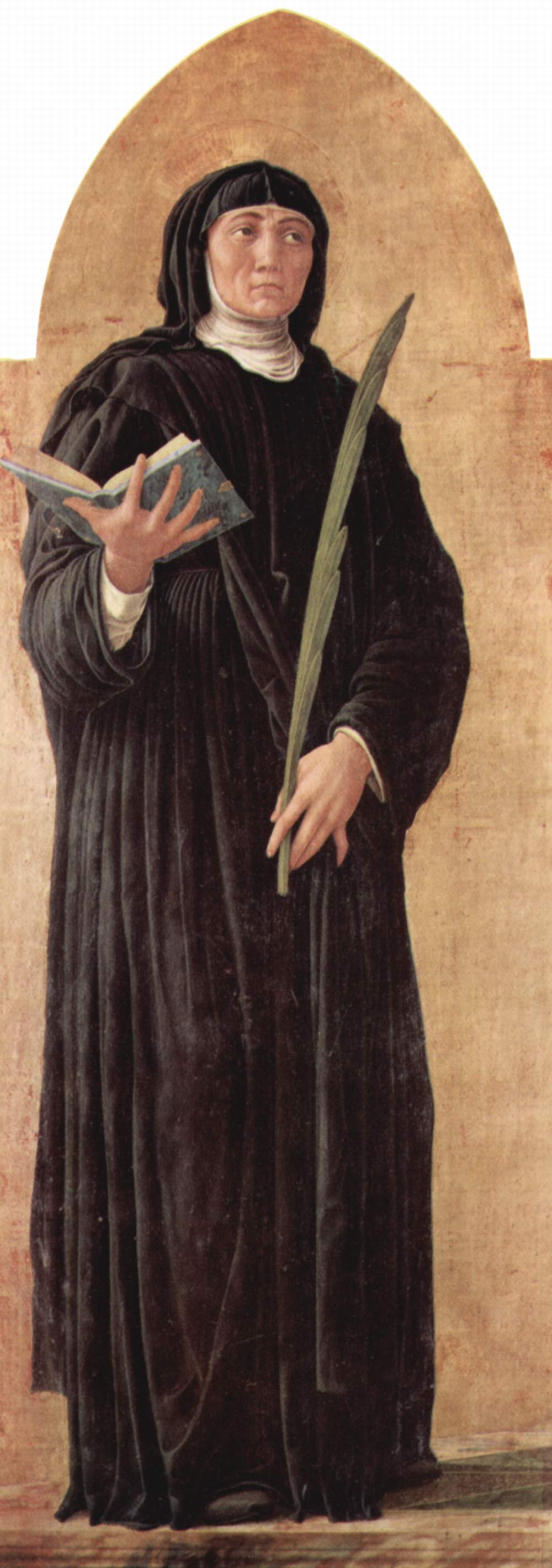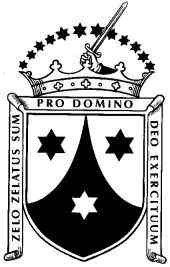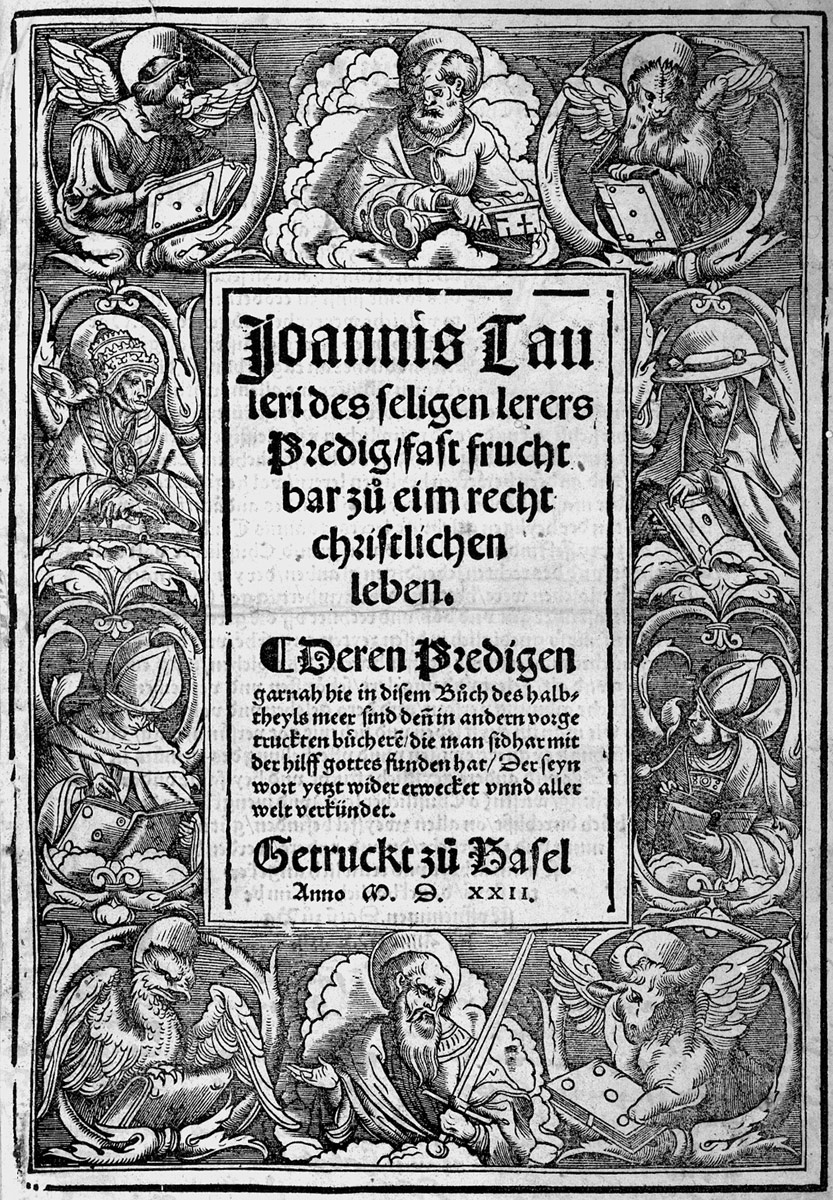|
Maria Petyt
Maria Petyt, also Petijt or Petiyt (1623–1677), was known as a "great mystic", Her writings have been cited as "unequaled in volume and mystical content within the historical context of the Flemish-speaking 17th century." Early life Maria Petyt was born in Hazebrouck on 1 January 1623, in the French part of Flanders near Dunkirk in present-day France, to parents who owned a fabric shop. Tragedy struck the young family numerous times: two sisters died while young, another died while only a teenager and her half-brother Ignace died by drowning. After a bout with smallpox at age eight, Maria was left with many facial marks, but despite these trials she remained an enthusiastic child, full of wit and joy. It was while preparing for her first communion at the age of 10 that Maria made a vow to become a nun and to consecrate herself to God. Spiritual life In 1640, against her father's wishes, she lived for a time in a convent of Augustinian sisters in Ghent but did not join that ... [...More Info...] [...Related Items...] OR: [Wikipedia] [Google] [Baidu] |
Venerable
The Venerable (''venerabilis'' in Latin) is a style, a title, or an epithet which is used in some Western Christian churches, or it is a translation of similar terms for clerics in Eastern Orthodoxy and monastics in Buddhism. Christianity Catholic In the Catholic Church, after a deceased Catholic has been declared a Servant of God by a bishop and proposed for beatification by the Pope, such a servant of God may next be declared venerable (" heroic in virtue") during the investigation and process leading to possible canonization as a saint. A declaration that a person is venerable is not a pronouncement of their presence in Heaven. The pronouncement means it is considered likely that they are in heaven, but it is possible the person could still be in purgatory. Before one is considered venerable, one must be declared by a proclamation, approved by the Pope, to have lived a life that was "heroic in virtue" (the theological virtues of faith, hope, and charity and the cardin ... [...More Info...] [...Related Items...] OR: [Wikipedia] [Google] [Baidu] |
John Of Ruusbroec
John van Ruysbroeck, original Flemish name Jan van Ruusbroec () (1293 or 1294 – 2 December 1381) was an Augustinian canon and one of the most important of the Flemish mystics. Some of his main literary works include ''The Kingdom of the Divine Lovers, The Twelve Beguines, The Spiritual Espousals, A Mirror of Eternal Blessedness, The Little Book of Enlightenment'', and ''The Sparkling Stone''. Some of his letters also survive, as well as several short sayings (recorded by some of his disciples, such as Jan van Leeuwen). He wrote in the Dutch vernacular, the language of the common people of the Low Countries, rather than in Latin, the language of the Catholic Church liturgy and official texts, in order to reach a wider audience. Life Until his ordination John had a devout mother, who brought him up in the Catholic faith; of his father we know nothing. John's surname, ''Van Ruusbroec'', is not a surname in the modern sense but a toponym that refers to his native hamlet - m ... [...More Info...] [...Related Items...] OR: [Wikipedia] [Google] [Baidu] |
Nuns From The Spanish Netherlands
A nun is a woman who vows to dedicate her life to religious service, typically living under vows of poverty, chastity, and obedience in the enclosure of a monastery or convent.''The Oxford English Dictionary'', vol. X, page 599. The term is often used interchangeably with religious sisters who do take simple vows but live an active vocation of prayer and charitable work. In Christianity, nuns are found in the Roman Catholic, Oriental Orthodox, Eastern Orthodox, Lutheran, and Anglican traditions, as well as other Christian denominations. In the Buddhist tradition, female monastics are known as Bhikkhuni, and take several additional vows compared to male monastics ( bhikkhus). Nuns are most common in Mahayana Buddhism, but have more recently become more prevalent in other traditions. Christianity Catholicism In the Catholic tradition, there are many religious institutes of nuns and sisters (the female equivalent of male monks or friars), each with its own ... [...More Info...] [...Related Items...] OR: [Wikipedia] [Google] [Baidu] |
Belgian Christian Mystics
{{Disambiguation ...
Belgian may refer to: * Something of, or related to, Belgium * Belgians, people from Belgium or of Belgian descent * Languages of Belgium, languages spoken in Belgium, such as Dutch, French, and German *Ancient Belgian language, an extinct language formerly spoken in Gallia Belgica *Belgian Dutch or Flemish, a variant of Dutch * Belgian French, a variant of French *Belgian horse (other), various breeds of horse *Belgian waffle, in culinary contexts * SS ''Belgian'', a cargo ship in service with F Leyland & Co Ltd from 1919 to 1934 *'' The Belgian'', a 1917 American silent film See also * *Belgica (other) *Belgic (other) Belgic may refer to: * an adjective referring to the Belgae, an ancient confederation of tribes * a rarer adjective referring to the Low Countries or to Belgium * , several ships with the name * Belgic ware, a type of pottery * Belgic Confession, a ... [...More Info...] [...Related Items...] OR: [Wikipedia] [Google] [Baidu] |
Carmelite Beatified People
, image = , caption = Coat of arms of the Carmelites , abbreviation = OCarm , formation = Late 12th century , founder = Early hermits of Mount Carmel , founding_location = Mount Carmel , type = Mendicant order of pontifical right , status = Institute of Consecrated Life , membership = 1,979 (1,294 priests) as of 2017 , leader_title = Motto , leader_name = la, Zelo zelatus sum pro Domino Deo exercituumEnglish: ''With zeal have I been zealous for the Lord God of hosts'' , leader_title2 = General Headquarters , leader_name2 = Curia Generalizia dei CarmelitaniVia Giovanni Lanza, 138, 00184 Roma, Italia , leader_title3 = Prior General , leader_name3 = Mícéal O'Neill, OCarm , leader_title4 = Patron saints , leader_name4 = Our Lady of Mt. Carmel, Elijah , parent_organization = Catholic Church , website = ... [...More Info...] [...Related Items...] OR: [Wikipedia] [Google] [Baidu] |
17th-century Christian Mystics
The 17th century lasted from January 1, 1601 ( MDCI), to December 31, 1700 ( MDCC). It falls into the early modern period of Europe and in that continent (whose impact on the world was increasing) was characterized by the Baroque cultural movement, the latter part of the Spanish Golden Age, the Dutch Golden Age, the French ''Grand Siècle'' dominated by Louis XIV, the Scientific Revolution, the world's first public company and megacorporation known as the Dutch East India Company, and according to some historians, the General Crisis. From the mid-17th century, European politics were increasingly dominated by the Kingdom of France of Louis XIV, where royal power was solidified domestically in the civil war of the Fronde. The semi-feudal territorial French nobility was weakened and subjugated to the power of an absolute monarchy through the reinvention of the Palace of Versailles from a hunting lodge to a gilded prison, in which a greatly expanded royal court could be more easily k ... [...More Info...] [...Related Items...] OR: [Wikipedia] [Google] [Baidu] |
1677 Deaths
Events January–March * January 1 – Jean Racine's tragedy ''Phèdre'' is first performed, in Paris. * January 21 – The first medical publication in America (a pamphlet on smallpox) is produced in Boston. * February 15 – Four members of the English House of Lords embarrass King Charles II at the opening of the latest session of the " Cavalier Parliament" by proclaiming that the session is not legitimate because it hadn't met in more than a year. The Duke of Buckingham, backed by Lord Shaftesbury, Lord Salisbury and Baron Wharton, makes an unsuccessful motion to end the session. When the four Lords refuse to apologize, they are arrested and imprisoned in the Tower of London. * February 26 – ** The first arrests are made in the case that will develop into the " Affair of the Poisons" in France, as Magdelaine de La Grange and her accused accomplice, Father Nail, are detained on suspicion of poisoning her lover, a Messr. Faurie. While in p ... [...More Info...] [...Related Items...] OR: [Wikipedia] [Google] [Baidu] |
1623 Births
Sixteen or 16 may refer to: * 16 (number), the natural number following 15 and preceding 17 *one of the years 16 BC, AD 16, 1916, 2016 Films * ''Pathinaaru'' or ''Sixteen'', a 2010 Tamil film * ''Sixteen'' (1943 film), a 1943 Argentine film directed by Carlos Hugo Christensen * ''Sixteen'' (2013 Indian film), a 2013 Hindi film * ''Sixteen'' (2013 British film), a 2013 British film by director Rob Brown Music *The Sixteen, an English choir *16 (band), a sludge metal band * Sixteen (Polish band), a Polish band Albums * ''16'' (Robin album), a 2014 album by Robin * 16 (Madhouse album), a 1987 album by Madhouse * ''Sixteen'' (album), a 1983 album by Stacy Lattisaw *''Sixteen'' , a 2005 album by Shook Ones * ''16'', a 2020 album by Wejdene Songs * "16" (Sneaky Sound System song), 2009 * "Sixteen" (Thomas Rhett song), 2017 * "Sixteen" (Ellie Goulding song), 2019 *"16", by Craig David from '' Following My Intuition'', 2016 *"16", by Green Day from ''39/Smooth'', 1990 *"16", ... [...More Info...] [...Related Items...] OR: [Wikipedia] [Google] [Baidu] |
French Revolution
The French Revolution ( ) was a period of radical political and societal change in France that began with the Estates General of 1789 and ended with the formation of the French Consulate in November 1799. Many of its ideas are considered fundamental principles of liberal democracy, while phrases like '' liberté, égalité, fraternité'' reappeared in other revolts, such as the 1917 Russian Revolution, and inspired campaigns for the abolition of slavery and universal suffrage. The values and institutions it created dominate French politics to this day. Its causes are generally agreed to be a combination of social, political and economic factors, which the ''Ancien Régime'' proved unable to manage. In May 1789, widespread social distress led to the convocation of the Estates General, which was converted into a National Assembly in June. Continuing unrest culminated in the Storming of the Bastille on 14 July, which led to a series of radical measures by the Assemb ... [...More Info...] [...Related Items...] OR: [Wikipedia] [Google] [Baidu] |
Johannes Tauler
Johannes Tauler OP ( – 16 June 1361) was a German mystic, a Roman Catholic priest and a theologian. A disciple of Meister Eckhart, he belonged to the Dominican order. Tauler was known as one of the most important Rhineland mystics. He promoted a certain neo-platonist dimension in the Dominican spirituality of his time. Life He was born about the year 1300 in Strasbourg, and seems to have been the son of Nikolus Tauler or Taweler, of Finkweiler (now Finckwiller st.), who in 1304 was a member of the Strasbourg city council. He entered the Dominican order at the age of about eighteen, and was educated at the Dominican convent in that city. Meister Eckhart, who greatly influenced him, was active in Strasbourg between about 1313 and 1326, though it is unclear what relationship they may have had. It is possible that while taking the customary eight-years' course of study at the monastery he heard Eckhart preach. From Strasbourg he went to the Dominican college of Cologne, an ... [...More Info...] [...Related Items...] OR: [Wikipedia] [Google] [Baidu] |
Meister Eckhart
Eckhart von Hochheim ( – ), commonly known as Meister Eckhart, Master Eckhart claimed original name Johannes Eckhart, was a German Catholic , philosopher and [...More Info...] [...Related Items...] OR: [Wikipedia] [Google] [Baidu] |
Teresa Of Ávila
Teresa of Ávila, OCD (born Teresa Sánchez de Cepeda y Ahumada; 28 March 15154 or 15 October 1582), also called Saint Teresa of Jesus, was a Spanish Carmelite nun and prominent Spanish mystic and religious reformer. Active during the Counter-Reformation, Teresa became the central figure of a movement of spiritual and monastic renewal, reforming the Carmelite Orders of both women and men. The movement was later joined by the younger Spanish Carmelite friar and mystic John of the Cross, with whom she established the Discalced Carmelites. A formal papal decree adopting the split from the old order was issued in 1580. Her autobiography, ''The Life of Teresa of Jesus'', '' The Interior Castle'', and ''The Way of Perfection'', are prominent works on Christian mysticism and Christian meditation practice. In her autobiography, written as a defense of her ecstatic mystical experiences, she discerns four stages in the ascent of the soul to God: mental prayer and meditation; ... [...More Info...] [...Related Items...] OR: [Wikipedia] [Google] [Baidu] |
.jpg)







